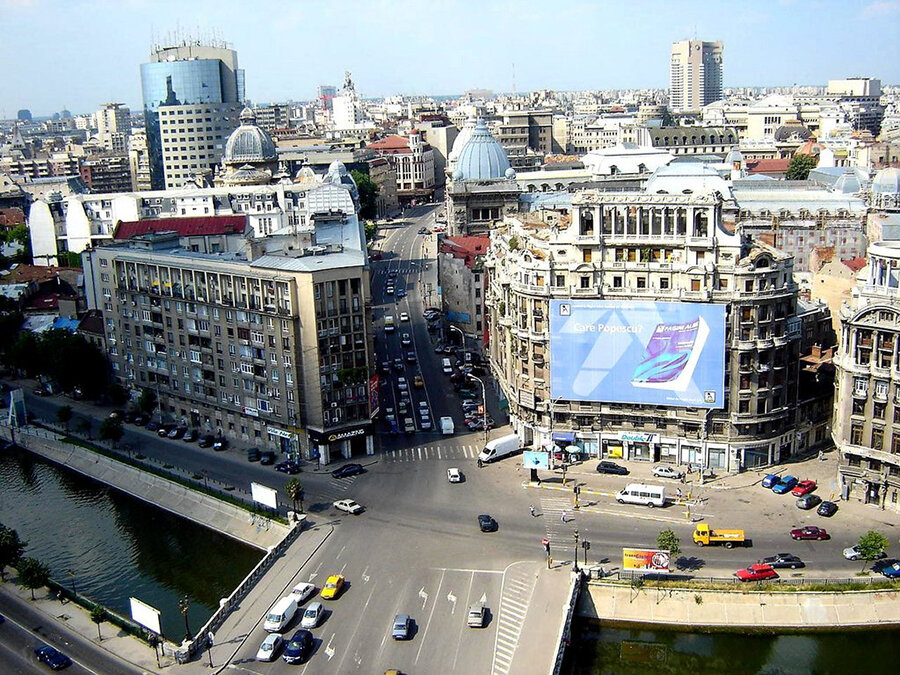читайте также
 Italy May End Tax Relief on Rental Income: What It Means for Landlords and Investors
Italy May End Tax Relief on Rental Income: What It Means for Landlords and Investors
 Luxury Travel Takes Off: How Demand Is Changing and Where to Find ‘Quiet Luxury’
Luxury Travel Takes Off: How Demand Is Changing and Where to Find ‘Quiet Luxury’
 Airbnb shifts all fees to property owners
Airbnb shifts all fees to property owners
 Most Punctual Airlines of September 2025: Who Arrived on Time and Why It Matters
Most Punctual Airlines of September 2025: Who Arrived on Time and Why It Matters
 Ten Years to a Passport: New Citizenship Rules in Portugal
Ten Years to a Passport: New Citizenship Rules in Portugal
 Top 25 World Economies 2025: Who Shapes Global Growth
Top 25 World Economies 2025: Who Shapes Global Growth
Romania’s Real Estate Market Outlook for 2025

Cushman & Wakefield Echinox surveyed senior executives from local, regional, and international investors and developers managing a real estate portfolio worth over €15 billion—around 50% of Romania's modern property market.
Investor Sentiment
Among the respondents, 64% expect the value of their portfolios to increase in the coming year, while only 6% foresee a decline. Bucharest remains the dominant target for real estate investment: nearly 80% of respondents plan new operations in the capital, compared to 66% in 2023 and 63% in 2022.
Secondary and tertiary cities are also gaining traction, reflecting diversification and increased interest in emerging markets outside Bucharest. Over 65% of respondents showed interest in secondary cities, and more than 30% are considering tertiary towns—significantly higher than in previous years.
Vlad Saftoiu, Head of Research at Cushman & Wakefield Echinox, emphasized that while investor outlook is optimistic, caution remains regarding Romania’s real estate development. Expectations include consolidation in the industrial, logistics, and retail segments, stabilization in office demand, and selective portfolio growth.
“Overall, Romania’s property market reflects a balance between opportunities and macroeconomic challenges, driven by growing confidence in economic stability, consumption, banking accessibility, ESG standards, and sustainable development,” said Saftoiu. Inflation remains a key concern affecting rental prices, while construction and financing costs pose risks across all segments.
Logistics is viewed as the most promising sector for investment in 2025, followed by retail. While office space sentiment remains cautious, signs of improvement are emerging.
Sector-Specific Forecasts
According to Colliers, Romania’s long-term prospects are positive, though challenges persist. Optimism is driven by infrastructure investment, Schengen zone accession, and favorable labor market conditions. However, modest economic growth, a large budget deficit, and political instability present risks.
Office Space:
In 2025, weak rental demand is expected to shape the office market. A decline in vacancy rates is anticipated for premium buildings due to a limited supply of new developments. A “dual market” is emerging, where modern, energy-efficient buildings remain attractive while outdated ones struggle.
Industrial and Logistics:
These sectors may face short-term slowdowns due to weaker external demand, but favorable labor costs and infrastructure development point to long-term growth. Rental demand is expected to stabilize at 2017–2019 levels.
Retail:
Over 200,000 sq. meters of new retail space is set to open in 2025, driven by both large chains and smaller developers targeting underserved towns.
Residential:
Housing prices are expected to rise moderately, supported by stable employment, falling interest rates, and consumer confidence. Private rental schemes (PRS) are gaining traction as an emerging trend.
Adaptability will define Romania’s real estate market in 2025, helping to navigate local and global uncertainties. Accession to the Schengen zone and infrastructure upgrades are likely to have a positive influence.
Economy and Politics
Full Schengen membership in 2025 and major infrastructure projects like highway construction improve Romania’s economic outlook and are likely to attract investment and boost industrial activity.
A growing trend of returning Romanian emigrants is becoming apparent, spurred by economic challenges in Western Europe and improving living conditions back home. Although volumes are still modest, this could become a key growth driver.
Romania’s GDP grew less than 1% in 2024, but a rebound to over 2% is expected in 2025. Colliers warns of persistent risks including weak external demand, budget deficits, and domestic political instability. Globally, 2025 remains unpredictable, with risks from the war in Ukraine, China’s slowdown, and global trade/geopolitical tensions.





